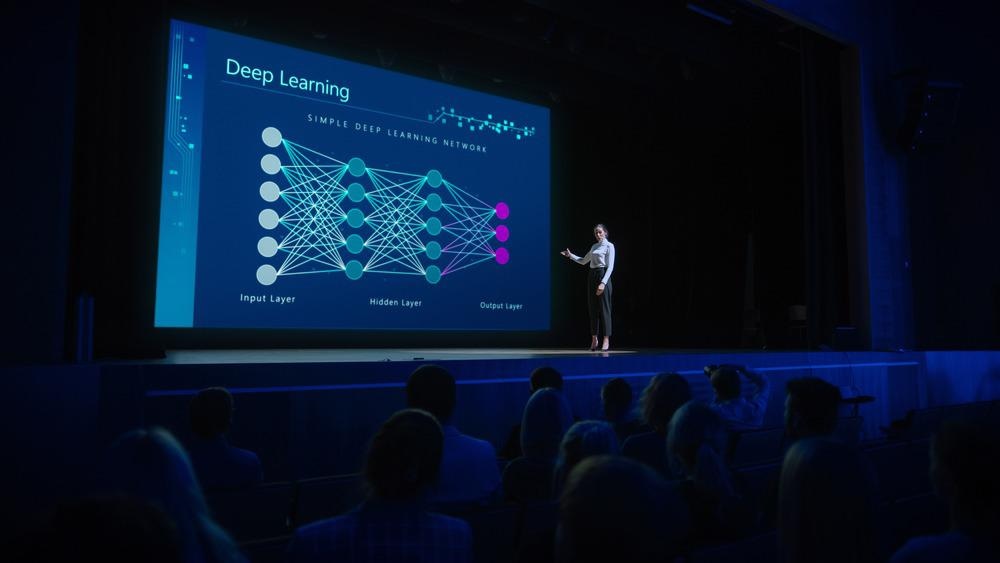Innovation is vital to pushing the field of life sciences forward. New perspectives to old problems and new insights into the nature of our world and the animals and plants that inhabit it allow us to design novel solutions that improve our lives. These solutions might improve the prevention, diagnosis, and treatment of disease, they might help further our clean energy capacity and tackle climate change, and they might address the global hunger crisis or make our world safer.

Image Credit: Gorodenkoff/Shutterstock.com
Advances in the life sciences touch upon just about every corner of our lives, and innovation in this field is greatly facilitated by scientific conferences. Here, we discuss how bringing experts together at scientific conferences benefits innovation within the life sciences.
Innovation relies on the borrowing and repurposing of ideas
At a scientific conference, experts worldwide come together and present their research. It allows experts in one field to gain insight into breakthroughs and paradigm shifts in other, closely linked fields. Ideas in one field may be relevant to another, and sharing these ideas helps scientists solve their own research problems by adapting ideas from another. In addition, the discussions that arise organically from bringing together scientific experts can lead to the development of important ideas.
While there is no current measure of the impact that conferences have on scientific productivity, if we look at the meaning of innovation, we can understand how bringing experts together from different backgrounds who work on different projects can influence innovative thinking in a team working in the same or different scientific field.
Innovation has become a 21st-century ‘buzz word’. We often talk about innovation across a multitude of industries, and it can be used to describe a myriad of things. In science, innovation is often thought of as synonymous with originality, unique thought, the ‘eureka moment’; however, the true nature of innovation isn’t as unique as many of us believe. The purer meaning of innovation refers to the repurposing of ideas.
Innovation usually happens when an idea seen in one field is adapted to solve a challenge somewhere else or combined with another idea to generate new possibilities. True original thought is very rare, whereas innovation, the adaptation of ideas to generate unique solutions, drives science forward.
Conferences, therefore, are essential vehicles for driving innovation. They bring together a vast network of academic and non-academic professionals who discuss and disseminate research findings, breakthroughs, and novel insights. Beyond this exchange of information, conferences act as a social platform where researchers can expand their networks and initiate discussions with their peers. Conferences foster activities that can yield significant scientific advances.
For example, a scientist may attend a conference and listen to a researcher explain how they approached a problem and developed a novel solution. The scientist may gain a new perspective on their own research project from learning how another team approached their problem. They may be presented with new technology that might help to benefit their own scientific challenges.
Just as scientists often look to nature to replicate successful natural technologies for the purpose of solving a human problem, e.g., sonar (inspired by bats), velcro (inspired by burdock burrs), and adhesives based on the structure of gecko feet, scientists who are exposed to research projects from different teams are able to take their ideas as inspiration for solving their own challenges.

Image Credit: elenabsl/Shutterstock.com
The impact of COVID-19 on scientific conferences
The COVID-19 pandemic significantly impacted international and national travel and human interaction in general. As a result of lockdowns and restrictions put in place to curb the spread of the virus, many annual scientific conferences were canceled or postponed. The pandemic undoubtedly has huge implications for conference activities and the advancement of knowledge in the life sciences as well as the scientific community in general.
Now, as restrictions are lifted, conferences are beginning again. However, many of these are taking on a virtual or hybrid model. While these conferences allow scientists the opportunity, once again, to share ideas, they do not facilitate the spontaneous conversations that occur at face-to-face meetings. They are also less likely to result in new collaborations between international teams. The innovation that may come out of these virtual and hybrid events is unlikely to match that which came out of face-to-face events.
Young scientists, it is feared, will mainly be impacted by this. While older scientists may have already established connections with the wider scientific community that allows them to be better connected with scientific advances in their field, young scientists are yet to establish themselves in this world. By being more isolated, they are less exposed to innovations from other research teams and are less likely to be inspired.
The practice of conferencing has been around since the 17th century and has been an important catalyst for innovation in the life sciences. As the world adapts to the ‘new normal’ established in the wake of the global pandemic, it is hoped that the format of virtual and hybrid conferences will be developed so that scientists do not miss out on the fundamental interactions and activities that facilitate scientific innovation.
Sources:
- Edwards-Schachter, M., 2018. The nature and variety of innovation. International Journal of Innovation Studies, 2(2), pp.65-79. https://www.sciencedirect.com/science/article/pii/S2096248718300249
- Hauss, K., 2020. What are the social and scientific benefits of participating at academic conferences? Insights from a survey among doctoral students and postdocs in Germany. Research Evaluation, 30(1), pp.1-12. https://www.ncbi.nlm.nih.gov/pmc/articles/PMC7499794/
- Jarvis, T., Weiman, S. and Johnson, D., 2020. Reimagining scientific conferences during the pandemic and beyond. Science Advances, 6(38). https://www.ncbi.nlm.nih.gov/pmc/articles/PMC7499794/
Last Updated: May 11, 2022